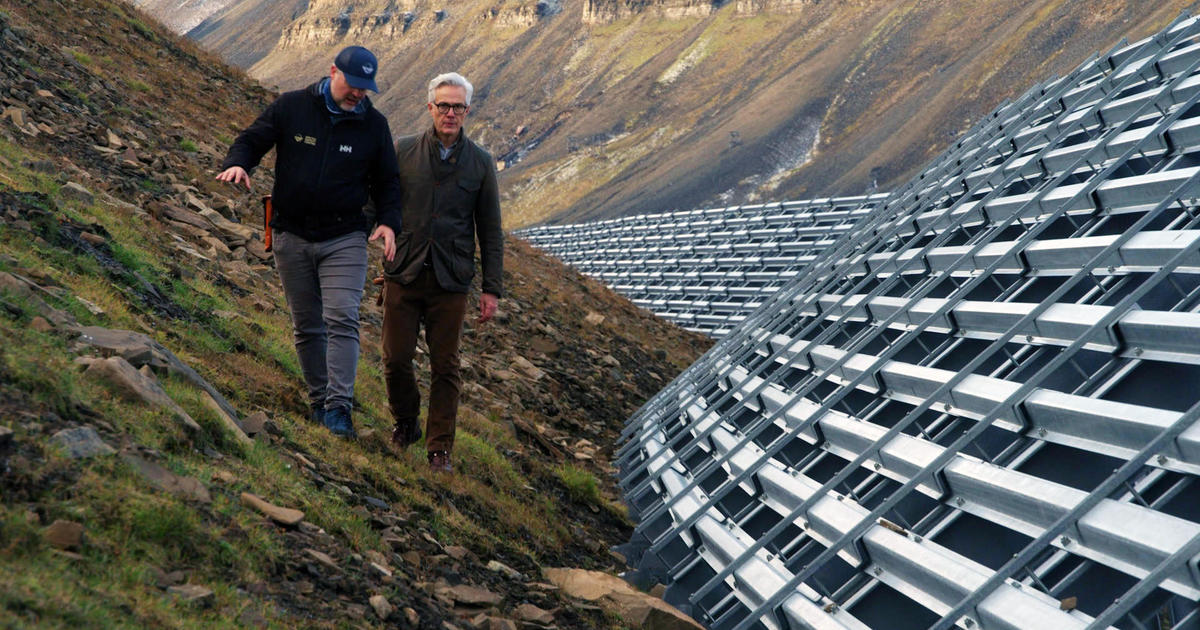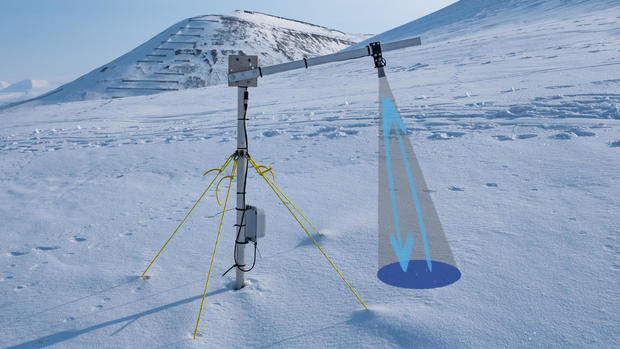[ad_1]
Within the Arctic, the place the dependable provide of vitality can imply the distinction between life and dying, one neighborhood is main the way in which in one of many planet’s most original renewable vitality transitions.
For greater than 100 years, the financial system of Svalbard, Norway — a bunch of islands close to the North Pole — has revolved round coal mining. However burning coal warms the planet, which contributes to the local weather change that’s now melting Svalbard’s glaciers.
The Norwegian authorities has now mandated Svalbard shut its final coal mine inside two years.
“We’re pleased with the mining business,” stated Heidi Theresa Ose, CEO of the coal mining firm, Retailer Norske. “On the similar time, we’re now trying into the longer term and discovering new methods to contribute with vitality.”
CBS Information traveled to the world’s northernmost and fastest-warming neighborhood of Svalbard. What scientists are studying there helps People perceive the modifications taking place in the US. Because the Arctic warms, it provides to rising sea ranges alongside our coasts and instability within the environment that contributes to our excessive climate occasions.
Whereas Svalbard intends to transition to renewable vitality, there’s little or no information on how effectively wind and photo voltaic can carry out within the islands’ harsh winter circumstances, the place there is no solar for months at a time.
Renewables within the Arctic
In a spot as chilly and distant as Svalbard, any disruption to the off-grid energy provide might require a complete evacuation of its 2,500 residents to mainland Norway, which is 600 miles away by boat or aircraft.
With that in thoughts, Retailer Norske has partnered with scientists on the College Centre in Svalbard to start reliability testing of the world’s northernmost photo voltaic park, on the location of Isfjord Radio, a distant luxurious resort. The resort runs on mills powered by diesel gas.
“We do not have a variety of expertise of how (the know-how) can deal with the tough local weather and climate circumstances that we’ve got up right here,” Ose stated. “We have now a job to confirm the know-how within the Arctic local weather.”
Retailer Norske studies robust outcomes from its 360 photo voltaic panels. In summer time, when the solar shines for twenty-four hours, the panels provide all the facility wanted to function the resort.
In spring, the corporate realized the panels can gather each direct daylight and lightweight that bounces off the snow. Ose stated whereas gas remains to be wanted within the whole darkness of winter, the resort has been in a position to reduce diesel consumption by 70%.
The subsequent testing floor would be the city of Longyearbyen, inhabitants 2,500, which is taken into account the northernmost neighborhood on the planet. In October, it stopped burning coal at its energy plant and transitioned to cleaner, however nonetheless soiled, diesel gas. The city intends so as to add renewables to Longyearbyen’s vitality combine as these applied sciences are confirmed dependable within the Arctic.
Along with Longyearbyen, there are about 1,500 communities above the Arctic Circle, the place individuals reside off-grid. Retailer Norske plans to promote its renewable vitality options to these communities, which embrace settlements throughout Canada and Alaska.
“Should you put all these 1,500 (communities) collectively, then you may have one thing actually massive altogether that may have an effect,” stated Anna Sjöblom, a meteorologist on the College Centre in Svalbard, who’s collaborating on the challenge.
Avalanche safety know-how
Past renewable vitality, Longyearbyen can be the place Retailer Norske and the College Centre in Svalbard have developed new know-how to assist predict one other menace to the neighborhood’s well-being — avalanches.
Whereas winters are very chilly, snowfall is mostly mild. However in January of 2015, a significant storm hammered the island with blinding wind and snow. Greater than 16 ft fell in about 12 hours in some spots.
These uncommon circumstances triggered an avalanche on one of many city’s mountains — the primary to ever do severe injury to Longyearbyen. The snow ripped properties off their foundations and left them in a pile. Two individuals died, together with a younger woman.
“I knew the woman,” Line Nagell Ylvisåker, Editor of the Svalbard Submit newspaper, remembered. “She went to kindergarten with my daughter. So, it was actually shut and laborious to grasp that it occurred.”
Since that deadly avalanche, Martin Indreiten with the Artic Security Middle on the College Centre in Svalbard, has led the hassle to defend the neighborhood towards the specter of future avalanches.
Indreiten stated the chance of an avalanche has all the time been reliably highest within the spring, however as Svalbard warms, now they’ll occur at different occasions of the yr, as effectively.
“It is the uncertainty,” Indreiten stated. “You do not know,”
Norway spent $25 million to construct a dam on the backside of the mountain to cease tumbling snow and shield the city. Increased up on the mountain, it constructed avalanche fences that assist maintain the snow from sliding down.
Indreiten designed an early-warning system that may give individuals time to evacuate. Working with the Norwegian cellular firm Telenor, Indreiten and his colleagues developed the low-cost snow senor.
The units are put in in distant places. They bounce a beam off the snow to measure its depth and sends again a whole bunch of measurements every day. Every system can last as long as 10 years on a single battery and prices simply $600.
CBS Information
“We’re getting info from the locations we wish to get info, and the fee is so low that many can use it,” stated Indreiten.
Avalanches are an issue in communities all over the world. Within the U.S. every winter, 25 to 30 individuals die in avalanches, principally in nationwide forests, based on the Nationwide Avalanche Middle.
Indreiten hopes the brand new know-how will be helpful worldwide. It has already been put in in one other avalanche-prone neighborhood on mainland Norway.
“In case you have higher instruments to do forecasting, then we might transfer individuals out of hurt’s manner when it is necessary to do it,” Indreiten stated.
Take an journey to Svalbard, Norway in this particular interactive internet web page and learn the way local weather change is impacting communities throughout our nation.
Meet our consultants
Martin Indreiten collaborated on an early warning system to guard the neighborhood of Longyearbyen from the threats of future avalanches. His workforce on the Arctic Security Middle constructed low-cost, snow depth sensors that are actually deployed on the steep slopes round city. Every system sends again a whole bunch of measurements a day, giving security managers higher insights into avalanche danger and when to difficulty evacuation orders. Indreiten believes avalanche-prone communities all over the world will profit from the know-how developed on Svalbard.



